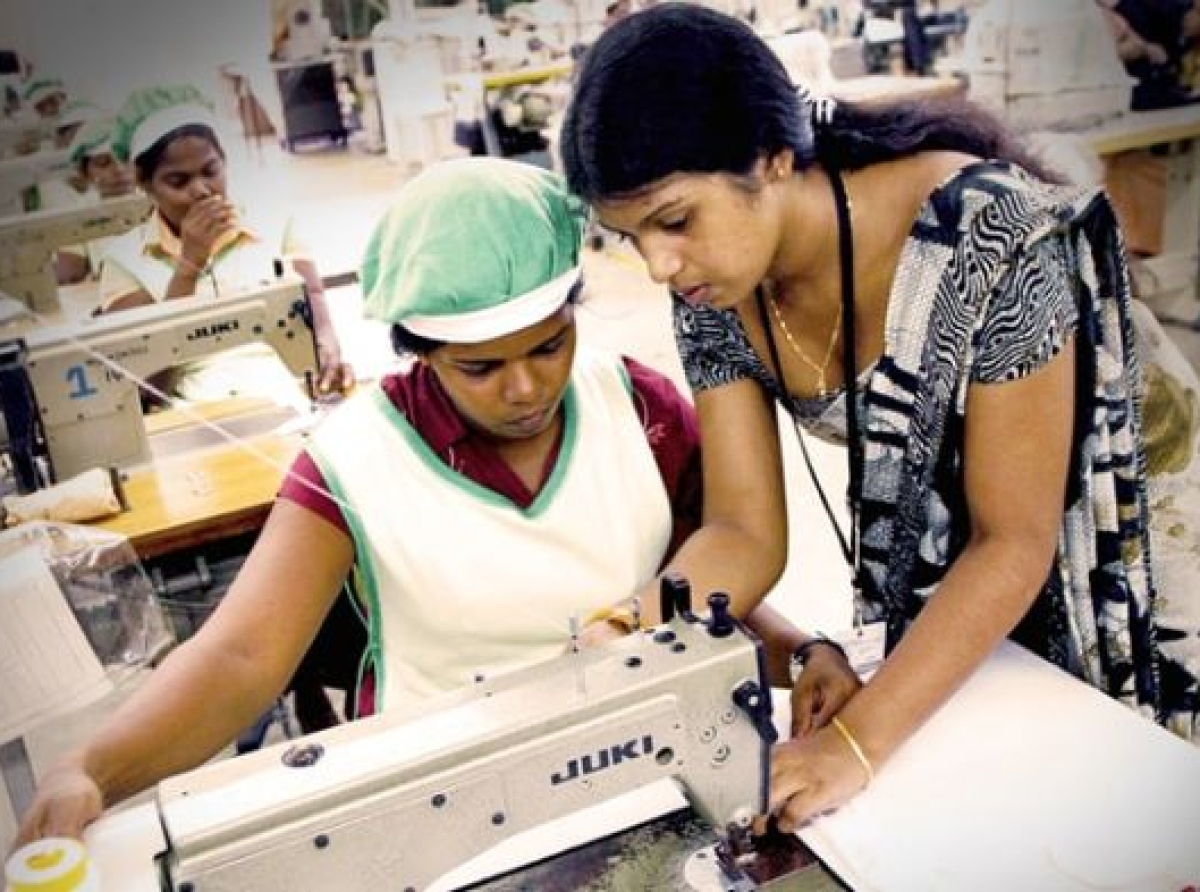21 April 2023, Mumbai
Training, and human resources in the garment sector, is one of the company's management's most significant and challenging responsibilities. When new units are opened, training is typically organized in a training center, which is always situated in a designated area inside the building and adheres to guidelines and instructions.
Training & its criticality
However, it is crucial that the training of the operators at the center ceases right once the unit is in operation to preserve the quality of the product and its knowledge processing.
This is so that no operator needs to be retrained utilizing these scientific techniques because they have already learned and digested the information. The corporation will incur significant training costs if it keeps doing this.
Hands-on; New operators and employees should receive direct training on the production line. Treating a company's human resources as its most precious asset in the modern business world is regarded as a competitive advantage.
Training is an investment; Although many businesses offer training options for their workers, it is a question of how thoughtful the management is in addressing their staff's precise training requirements, directly impacting the workers' performance.
Recent trends in the apparel training industry
In recent years, numerous South-East Asia and Indian businesses have benefited from using qualified trainers. Observations indicate that despite significant cost savings, most still need to include a trick and not reap the rewards by not fully integrating training into the production management process and tailoring their training systems to their requirements.
Adaptability is the key; The failure to understand how to adapt the concepts of systematic training to various production systems and circumstances is a crucial issue in this situation.
The clothing sector is tremendously diverse, requiring workers to adapt to multiple items, production methods, order sizes, and cultural norms. There is no one size fits all answer to operating a profitable clothing company.
Art and Science of Matchmaking
Companies that have successfully integrated trainers into their factories can now consider stepping up to a higher level by further customizing the training approach to their unique requirements and conditions if we start by examining the training of new hires or first-year students. Are hiring rates correlated with initial training capabilities as well as production needs?
Increasing role and responsibilities of HR Department; Are those two concerns the same to prevent a lack of recruits or the opposite, when trainees hang about or are exploited as assistance for weeks, causing losses? Does HR have a recruitment goal connected to the first two conditions?
Operations training
Students can carry out the duties or operations if they develop the necessary abilities. This fundamental idea governs the ongoing training program. Bespoke training; Creating training exercises for every conceivable design element and scenario will only be practical if learners work with fashion goods like dresses and on short manufacturing runs.
In light of this, a program to teach core skills will be necessary. Different strokes for different folks Alternately, if a standard product, like men's formal shirts, is to be manufactured, only a few core skills linked to specialized operation training are feasible.
When creating operator training courses, the manufacturing system must also be considered in addition to the product. Reduce the number of abilities to be learned by simply teaching what is essential if PBS lines are used. One or two operations need to be mastered.
Women's empowerment & encouragement
Almost 27 million women in India depend on the textile industry for their income. In the textile industry, women make up around 75% of the workforce. Women contribute as a key constituent of the overall trade workforce, contributing to as high as say 60 to 70% of the collective manpower.
Not only that, " The textile industry can boast of being a primary source of income for around in excess of whopping 27 million women in India, we have to mention here that 50% or thereabouts are to be identified with unorganized sectors like handlooms, handicrafts, and sericulture, etc which are unquestionably remarkable".
Several projects and programs for skill development have been developed in the textile industry in India. 11.14 lakh people were taught in textiles and apparel, jute, spinning, weaving, technical textiles, sericulture, handloom, and handicrafts as part of the Integrated Skill Development Scheme, with 8.43 lakh of them finding employment.
Various ongoing projects on skills development
The Government of India has been taking several steps to promote the sector and urge individuals to enter it in light of the potential of the apparel industry to produce income and job possibilities.
Samarth has created a few modules and courses in apparel/clothing production. Samarth's program aims to educate young people about the textile industry so they can obtain lucrative and long-term jobs. The program also includes encouraging the development of the traditional jute, sericulture, handicraft, and handloom sectors.
Ten lakh individuals will be taught, with nine lahks coming from the organized sector and one from the traditional industry. Thus, the system encompasses the textile value cycle.
Quintessential garmenting
Every procedure should be examined, and the appropriate handling and sewing abilities should be determined. The core skills of aligning at the foot, sewing a straight seam, and stopping precisely in a corner will be present in every operation.
In light of this, numerous exercises can be created to teach these skills, with the proper ones being introduced to the student. Again, only impart necessary knowledge. It serves little purpose to educate recruits on how to sew long seams if they only go to topstitch collars.
Improve employability
To enhance employability, it is important to prioritize education and skill development.
Manufacturers might naturally get cracking by ramping up recruitment efforts to match the demands of this digital transformation along supply chains. Still, it's worthwhile looking more closely at the advantages of reskilling, upskilling, and new-skilling (R.U.N) current employees/workforce to save time, energy, and money.
"The Skill Development efforts need to be more participatory and engaging with the youth so that the creative prowess is unleashed and that is precisely what can lead India to become an economic superpower, realizing the dreams of 500 million youth of India" alluded Dr. Darlie Koshi, Ex-DG, ATDC India.
After the "core" abilities have been mastered, the trainee can be given tasks unique to the operation to help them connect the skills they have learned to the work they will be doing and provide them with practice.
Interesting facts; Here again, particularly the apparel industry has a robust claim that at the fundamental level even unskilled/low-skilled can be made available for training transforming their lives and livelihoods and, that too at a very affordable cost is something unique to this sector.
Multiplier effect; The industry creates 70 jobs for every crore rupee invested. Highly skilled labor is likely to outnumber unskilled workers satisfying evolving buyer preferences and meeting delivery targets offsetting unit labor costs.
It is almost proven that investing in skilling staff can enhance efficiency multifold, raising the productivity bar, and the good thing is so is profitability, and it is in consonance with promoting innovation and helping attain enduring sustainability.
Latest Publications


































